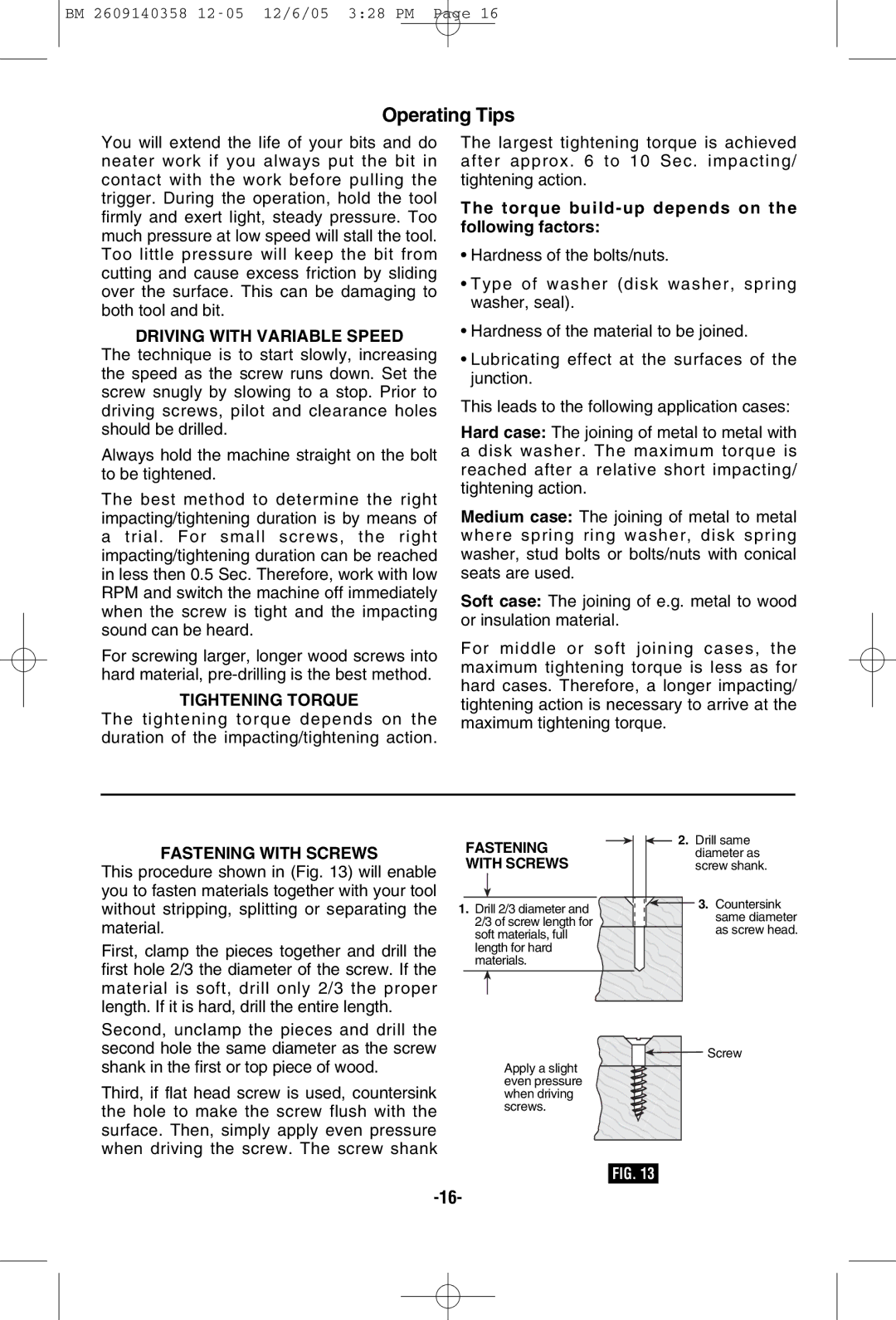22612, 23609, 23618, 22618, 22614 specifications
Bosch is renowned for its innovation and quality in power tools, and the Bosch Power Tools series, particularly the models 23614, 23612, 22614, 22618, and 23618, showcases this commitment to excellence. Each model brings unique features and technologies that cater to a variety of construction and woodworking needs.The Bosch 23614 is a robust tool designed for high-performance cutting and drilling tasks. It boasts a powerful motor that provides exceptional torque and speed, enabling users to complete projects efficiently. The user-friendly design includes an ergonomic grip for comfort during prolonged use, significantly reducing fatigue.
Similarly, the Bosch 23612 emphasizes precision and control. This model is equipped with advanced electronic speed control, allowing users to adjust the speed settings according to the material being worked on. This versatility makes it ideal for both heavy-duty applications and delicate tasks, making it an essential addition to any toolkit.
The Bosch 22614 showcases a compact design without compromising power. This model is particularly useful for tight spaces where larger tools cannot fit. Its lightweight construction, coupled with heavy-duty performance, ensures that users can maneuver easily while maintaining optimal cutting capabilities.
Moving on to the Bosch 22618, this model stands out for its battery technology. It features Bosch’s innovative lithium-ion battery that provides extended runtime and shorter recharge times. This efficiency makes the 22618 an excellent choice for professionals who require mobility and dependability on the job site, ensuring that the tool is ready when they are.
Finally, the Bosch 23618 further revolutionizes the user experience by integrating smart technology. This model is equipped with Bluetooth connectivity, allowing users to monitor battery performance and charging status through an app. This level of technological sophistication ensures that users are well-informed, allowing them to maintain productivity without interruptions.
In conclusion, the Bosch Power Tools 23614, 23612, 22614, 22618, and 23618 exemplify cutting-edge technology and user-centric design. With features that enhance performance, comfort, and connectivity, these tools are perfect for both professionals and DIY enthusiasts, proving that Bosch continues to lead the way in the power tools industry. Whether it is high torque, electronic speed control, compact designs, or smart technology, these models meet the diverse needs of their users, making them indispensable in any tool collection.

